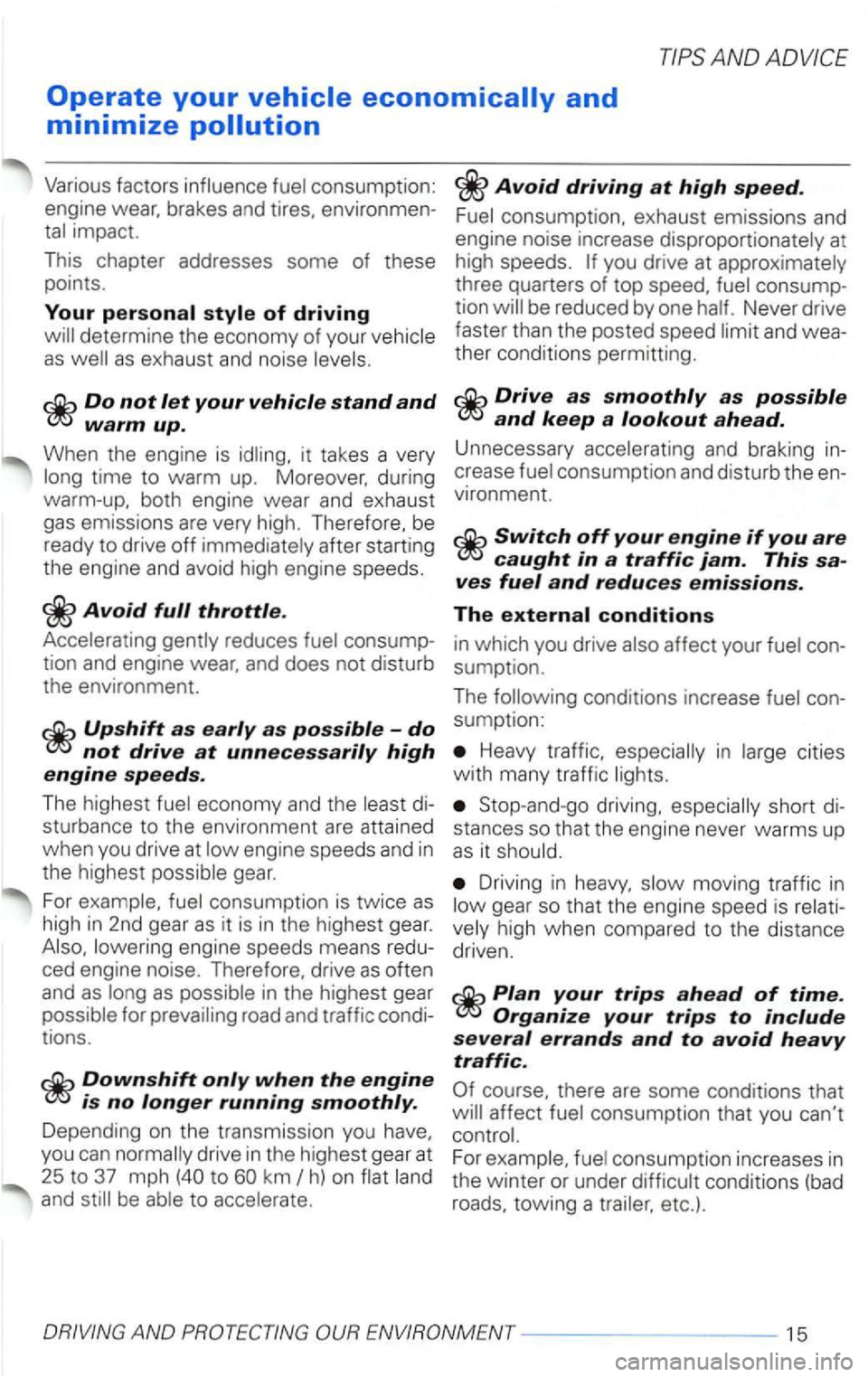Page 176 of 483

--------------------------------------------------~
The
stores accumulated data covering any num
ber of successive trips, regardless of
how long the ignition is off between trips. Stora
ge capacity of the
information . slide switch knob A on the windshield wiper lever to the desired
position.
1 - Single trip memory
2 -
Total tr ip memory
The following data can be recalled for dis
play:
Average fuel consumption
Distance driven
Average driving speed.
Driving time
one of the stored values is exceeded, then
the total trip memory will be erased and re
calculated once again. Unlike the single trip
memory, the total trip memory
won't be
erased if you have stopped for more than
two hours.
Erasing the memories
With the ignition on. you can erase each me
mory separately. Press button A and hold
for longer than two seconds selected func
tion will be erased.
you disconnect the battery,
When the ignition is switched on,
mph
or
km/h within the 45 minute period, the new actual outside temperature be dis
played.
Displayed temperature will range between
and + and
an ice crystal
symbol also appears in the display (icy road
warning).
This symbol first flashes for about 5 sec
onds, then stays on until the outside tem
perature climbs above
an icy road warning the
switch from the
Page 272 of 483

A
Adjustable steering column .......... 68 Alternator/Generator
.. .............. 19
Adjusting Anti-lock
braking system (ABS) ...... 17
-controls ............. .. . Anti-Slip regulation (ASRl
- Head Restraints .
............... 56 -
..................
.. See a/so Alarms
Air circulat ion -luggage compartment . 72 Armrest ........................... 66
Air conditioning
....................
cooling ...... ............ 85 -
Storage bin . . . . . . . . . . . . . . . . .
..................... 89 -Tiptronic ....................... 94
Air vents
-Towing ........................ 98
- Air conditioning
................. 82 Auto matic transmission (5-speed) .... 93
-
..................... 91 - Back-up lights .................. 96
Airbag
............ See also Bookl et 2.1 -Igni tion key safety interlock ...... 93
-
safe ty .................... 34 Average driving speed indicator ...... 11
-Indicator light ................... 16 Average fuel consumption indicator ... 11
Airbag indi cator light ................ 16
Alarm system
........ ..............
Page 376 of 483

Various factors influence fuel consumption:
engine wear. brakes
and tires, environmen
tal impact.
T his chapter addresses some of these
points.
Your
warm up.
When the engine is idling, it takes a very
long time to warm
up. Moreover. during
warm-up, both engine wear and exhaust
gas emissions are very high. Therefore, be
ready to drive
off immediately after starting
the engine and avoid high engine speeds.
Avoid
Upshift as early as possible -do not drive at unnecessarily high engine speeds.
The highest fuel economy and the least di
sturbance to the environment are attained
when you drive at l
ow engine speeds and in
the highest possible gear.
For example , fuel consumption is twice
as high in 2nd gear as it is in the highest gear.
Downshift only when the engine is no longer running smoothly.
Depending on the transmission you have.
you can normally drive in the highest gear at
25 to 37 mph
(40 to km
Avoid driving at high speed.
Fuel consumption, exhaust emissions and
engine noise increase disproportionately at
high speeds.
you drive at approximately
three quarters of top speed, fuel consump
tion
be reduced by one half. Never drive
faster than the posted speed limit and wea
ther condit ions permitting.
Drive as smoothly as possible and keep a lookout ahead.
Unnecessary accelerating and braking in
crease fuel consumption and disturb the en
vironment.
Switch off your engine if you are caught in a traffic jam. This sa
ves fuel and reduces emissions.
The
Heavy traffic, especially in large cities
w ith many traffic lights.
Stop-and-go driving, especially short di
stances so that the engine never warms up as it should.
Driving in heavy, slow moving traffic in low gear so that the engine speed is relati
vely high when compared to the distance
driven.
Plan your trips ahead of time. Organize your trips to include several errands and to avoid heavy traffic.
course. there are some conditions that affect fuel consumption that you can't
control.
For example, fuel consumption increases in
the wint er or under difficult conditions
(bad roads. towing a trailer. etc.).
DRIVING AND
Page 418 of 483
lire service life
The service of your tires depends for the
most part on the
sted on a sticker on the
flation, causing loss of vehicle
control.
Low tire pressures increase fuel
consumption which is
tal to the environment.
tir e inflation
sure means: the has been standing for at than 1
(1 km).
Do not forget to stem
caps after checki ng tire pressure.
Driving habits
Fast cornering, heavy acceleration and hard
brak ing
on new
have your re-balanced. A
be checked at
check tire pressures when the tires
are
sure be higher. Do not reduce the
pressure of warm tires.
Don't forget to check the spare
alignment causes excessi-
ve and uneven tire wear, impairing the ty of the vehicle.
WAGEN
I